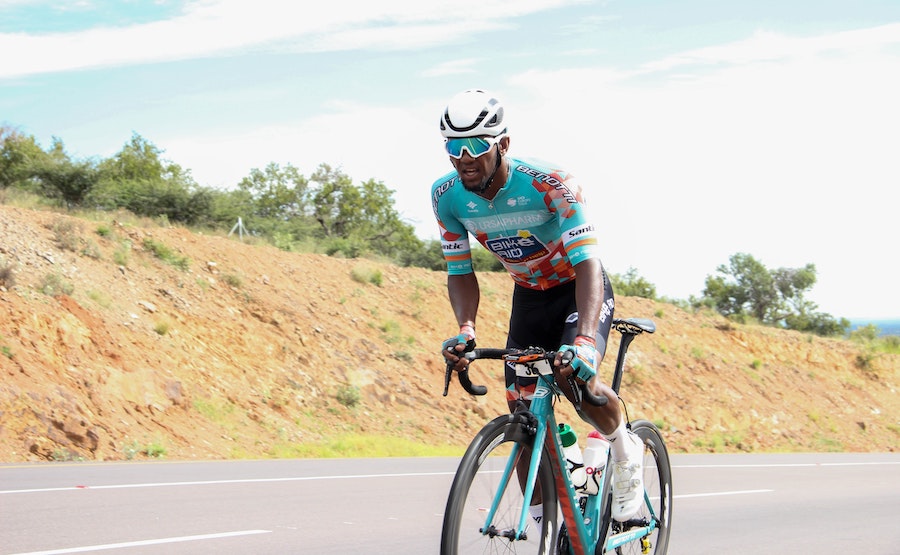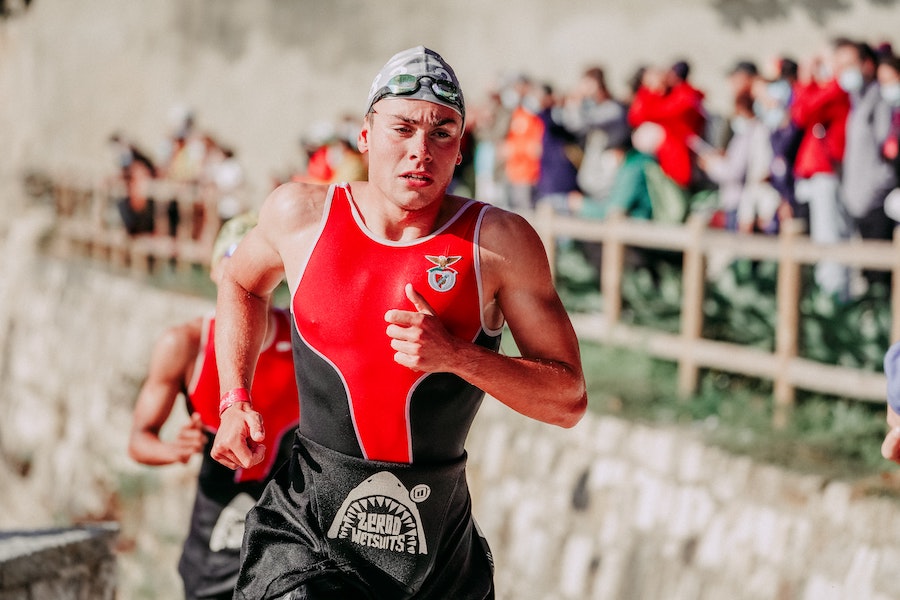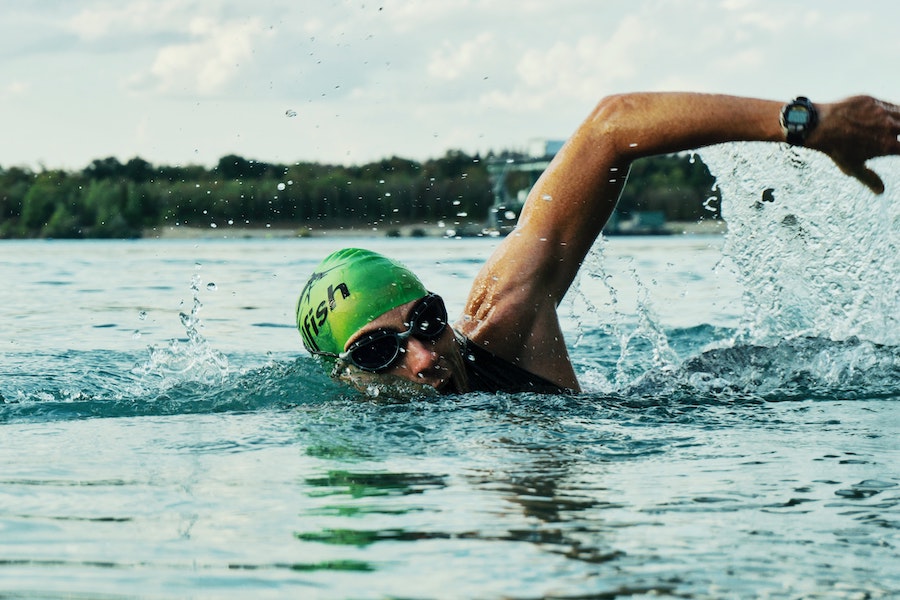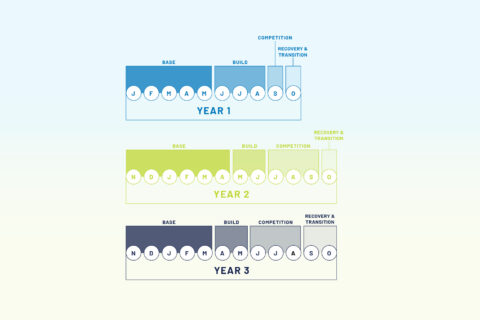All coaches start the season by asking athletes about their goals—what they most want to achieve in their sport in the coming weeks and months. That seems simple enough. But it’s not always as easy as it sounds.
The athlete’s view and the coach’s view of what the goal should be may not align. If there is disagreement, it may test the relationship. Or it could be a case of miscommunication—maybe the athlete’s goal isn’t fully understood by the coach. Either way, they’re not working together with a common purpose. It’s imperative that the coach and athlete come to agreement on precisely what the target is. When set correctly, and used throughout the season as a guiding beacon, the goal is a powerful high-performance tool.
What follows are three athlete case studies from my coaching career that illustrate the process of setting season goals, with the added benefit of knowing how it all played out. Spoiler alert: It doesn’t always go well, as you’ll see.
Case study #1: Cyclist looking to podium

In the early days of my coaching career I had a client who finished his season on the podium in his last A-priority bike race in what I thought was a quite successful year. He had been on the podium in his two other A races as well. Overall, his data and results for the season were quite impressive. But when I talked with him the day after his last race, it became clear that he was rather disappointed. I was astounded. How could that be?
I discovered that he really wanted to beat a certain competitor that season. That guy won his age group in the last race and my client never beat him the entire season. He had mentioned the other athlete several times when we talked, but it didn’t dawn on me that his goal was actually focused on this rider.
This was the moment when I realized that his personal goal was different than what he had suggested to me in our conversation at the start of the season. That wasn’t his fault. It was mine—I didn’t dig deeply enough. I assumed I knew what we were aiming at because he mentioned at the start of the year: “I’d like to be on the podium in all of my races.” I assumed that was the goal we were aiming for. I was wrong.
Admittedly, even if I had known of his goal of beating a certain athlete, I doubt that I would have agreed to it. That may have been a secondary, or better yet, a tertiary goal, but certainly not a reason for training and racing. It would have been far too limiting. But it seemed to be what he was after, without my ever coming to realize it. Good season? I still think so.
Lesson learned: Never assume that you fully understand what the athlete’s goal is until you’ve discussed it thoroughly with the client on multiple occasions. I made the mistake of moving forward with a goal stated in one conversation early in the season. Make sure you fully understand, and agree, with the athlete’s goal.
Case study #2: Short-course standout with Ironman ambition

I coached a triathlete who was unsure of his goal and he vacillated on what the goal should be. He was mostly struggling to decide what type of races he should focus on. Clearly, he was better at shorter races and excelled at the Olympic distance. We both agreed on that. But many of his training partners were doing Ironman-distance events and it was apparent to me that he was drawn to the glamor of long-course racing. There’s no doubt that long-course events receive a lot more press in the triathlon world, and his peers looked up to Ironman competitors. We had numerous conversations about this off and on throughout the year. One month he wanted to do Olympic races but the next month it was Ironman. I could not get him to commit to one purpose. This produced some training chaos.
His season goals kept changing and I was left scratching my head wondering what I should do. I usually tried to talk him into focusing on Olympic-distance races since it was obviously his strength. He would agree, but a few days later he would bring up the subject again. He finally left me for another coach who also agreed he should do long-course races. He did okay with that coach, but never reached the same level he could have achieved in short-course races. He was a great client otherwise but caused a real dilemma for me as his coach.
Lesson learned: I let the discussion about this athlete’s racing goals go on far too long. Logically, we both knew he should be aiming at the Olympic distance, but he was emotionally invested in racing Ironman. Looking back, I believe I should have supported his curiosity about long-course racing even though I knew he was less likely to be as successful at that distance.
This athlete needed a clear view of where he was aimed that season—even if it was, in my opinion, the wrong target. My continued insistence on short-course racing wasn’t doing him any good. And I suspect that after one year of fairly good race results he might have decided to return to the race format where he could achieve top results. Then again, over a year of focused long-course training we may have found a way for him to be successful.
Case study #3: Triathlete striving for Kona qualification

This athlete’s goal really stretched me to my limits. He came to me wanting to qualify for the Ironman® World Championship in Kona, Hawaii. He had raced that distance once before, in Kona. But that race was in the early 1980s when all an athlete had to do was pay the entry fee. It was now 20 years later, and athletes needed to qualify.
While this athlete had raced short-course off and on over the past 20 years, he had not completed any long-course triathlons since his race in Kona. We lacked a reference point to even know if he could qualify. He was pretty confident that he could do it, so I started coaching him.
I soon came to realize that this athlete didn’t have the physiology he needed to qualify. He lacked high-level ability in two of the three sports. While he was a very good swimmer, it wasn’t enough.
My biggest concern: He was incredibly invested in the race in terms of his emotional commitment—he told me the race would change his life for the better. I won’t go into the details here, but it had a lot to do with mental pressures he had been coping with for some time. Getting back to Kona would get his life back on track, or so he believed.
So now what do I do? I had taken him on as a client mostly based on his story of what he had been through and how finishing in Kona would help him become psychologically stable again. What’s more, he was simply a nice guy who needed my help. I really couldn’t leave him hanging out on his own. But I also realized I couldn’t lead him down a path to an end result that seemed unlikely, all the while making promises I couldn’t keep. Eventually it would become obvious to him too.
I landed on a plan. I told this athlete that we needed to find the results and splits for Ironman qualifiers in his age group from all of the previous season’s races. That would help us decide how to train and know what we had to aim for in picking a qualifying race that would best suit his strengths. But it was just as important that he be the one to do the research so he could learn more about the people he could end up competing with.
A week later he got back to me, and he told me that he knew he couldn’t match the performance of anyone who had qualified the previous year. They were all quite a bit faster than him in two of the three sports—cycling and running. In those two sports, he wasn’t even close. While this was disappointing for both of us, it was a great relief since I didn’t have to be the bearer of bad news.
Fortunately, he remained upbeat and wanted me to continue coaching him as he figured that given enough time—and some luck—he would eventually get in. And he did!
The following year his name was drawn in the Ironman lottery and he was accepted. What fantastic luck! Now, our goal was to meet the cutoff times in each of the three sports while preparing for the heat and humidity of Kona.
I went to Kona that year to cheer him on. Fortunately, he made the bike cutoff. That took some focused effort. I was very proud of him. Later that evening I met him on the run course just before the midnight cutoff. He was upbeat, having made a new friend who he was walking with. I walked with them back into town and encouraged him to finish by running since midnight was closing in on us. He made it. That day was very special for both of us. We remain close friends today.
Lesson learned: In this case I made the right decision in helping the athlete set goals. Still, it was emotionally draining for me as I waited to see what the athlete would decide about his abilities as compared with the previous year’s Kona qualifiers from his age group. And then we got lucky on top of all of that. Wow!





